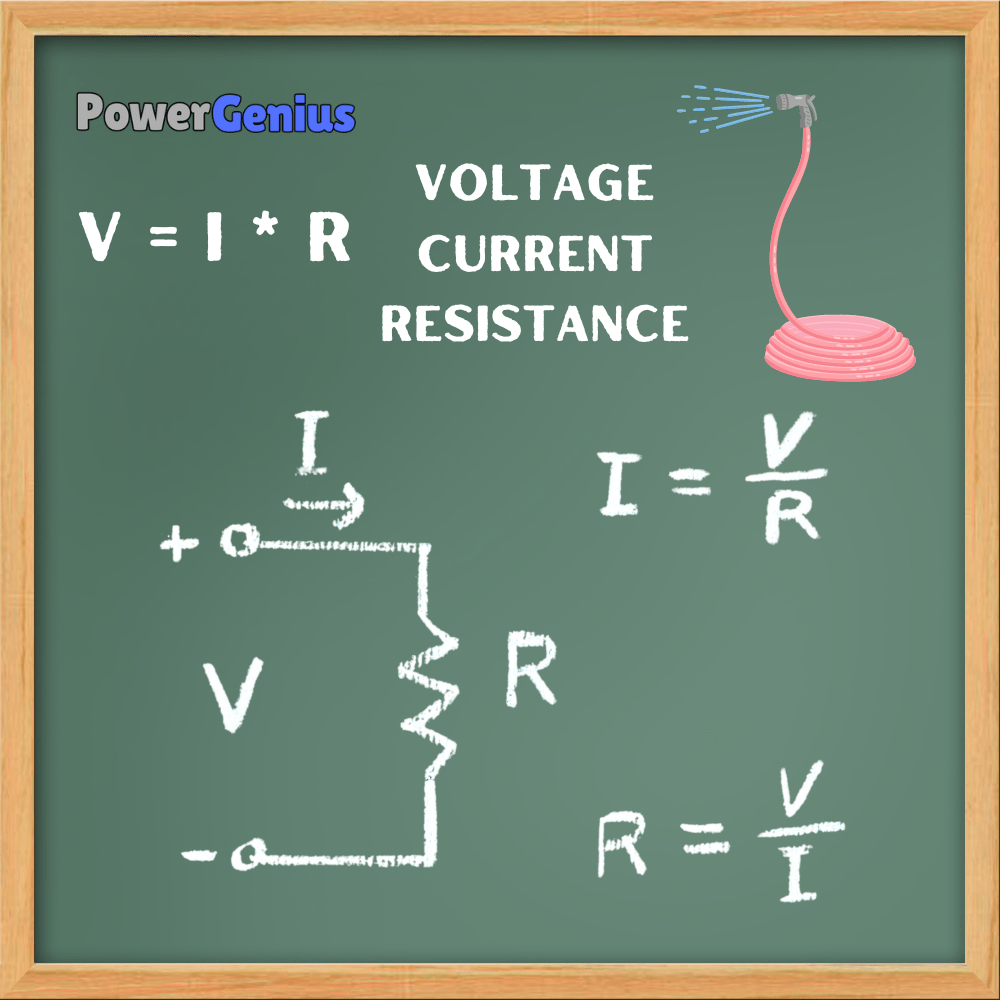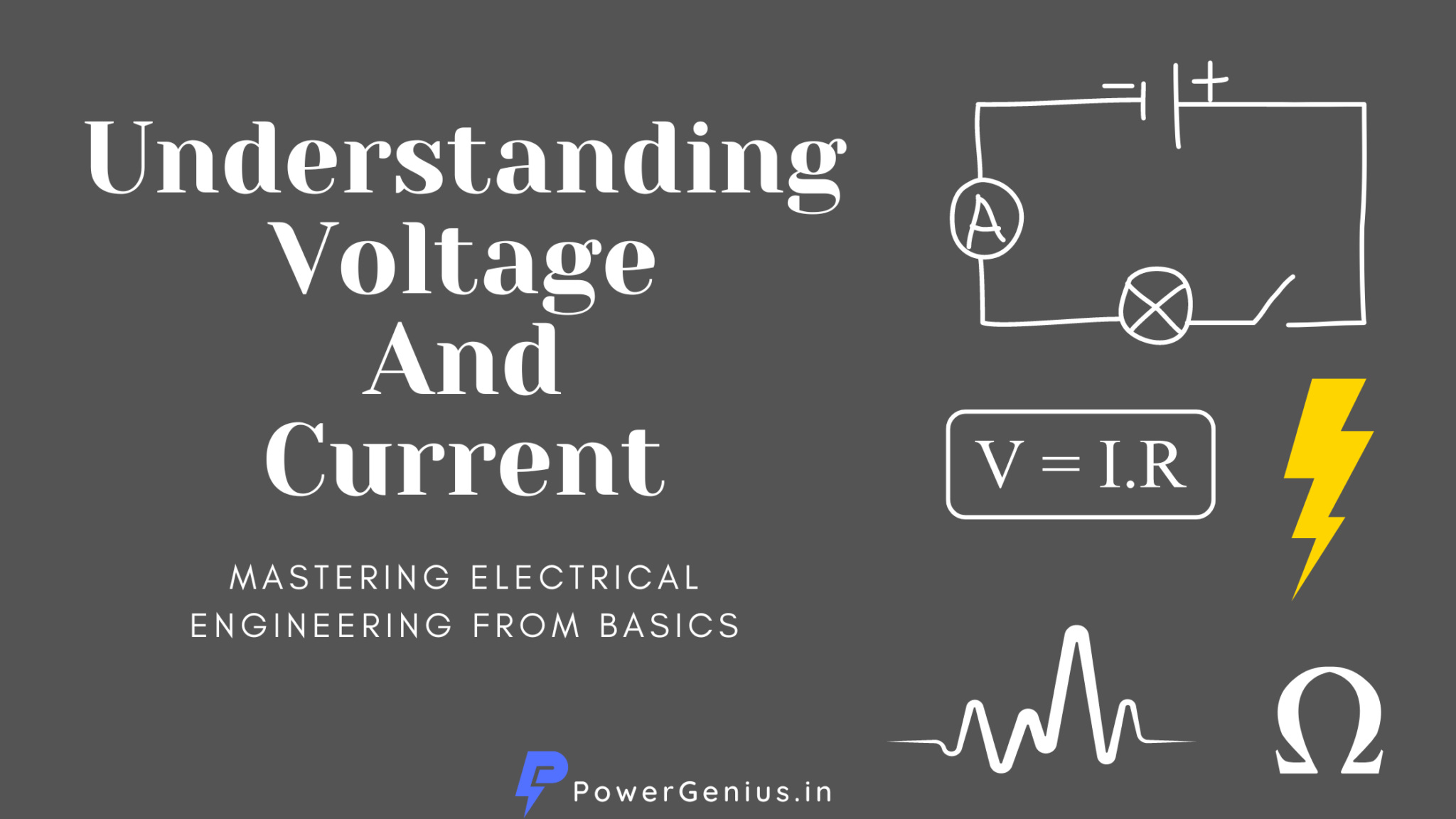Electricity is the invisible force that powers our modern world. But how does it all work? In this interesting article, we’re going to understand the secrets behind two fundamental concepts: Voltage and Current. Buckle up, as we take a journey from the basics to the magic that makes your devices come to life!
Voltage – The electric push
Voltage, also known as electric potential, is the electric potential energy per unit charge in an electrical circuit. It is the force that pushes electric charges, typically electrons, through a conductor, creating an electric current. Voltage is measured in volts (V).
In more practical terms, you can think of voltage as the electrical pressure that propels electrons to move. Just as water flows from high pressure to low pressure, electric current flows from higher voltage to lower voltage.
Potential Difference:
Potential difference, often referred to simply as voltage difference, is the difference in electric potential between two points in an electrical circuit. It represents the change in potential energy per unit charge as a charge moves from one point to another. The potential difference is what drives the flow of electric current.
In essence, potential difference is the voltage drop experienced by a charge as it moves through a component in a circuit. It’s measured in volts (V), just like voltage.
In summary, while voltage is a broader term representing electric potential, potential difference specifically refers to the difference in potential between two points in a circuit. They are closely related concepts and are crucial for understanding the dynamics of electric circuits.
Current – The flow of electrons
Current is the actual movement of electric charge. It’s the flow of electrons through a conductor, much like water flowing in a river. If voltage is the push, current is the actual movement of the water or, in our case, the flow of electrons in a circuit. Current is measured in amperes (A).

The Relationship Between Voltage and Current
Ohm’s Law is a fundamental principle in electrical engineering that describes the relationship between voltage, current, and resistance in an electrical circuit. It’s like a simple recipe that helps us understand how these three elements interact with each other. Let’s break it down in layman’s terms:
- Voltage (V): Think of voltage as the electric push or force in a circuit. It’s what makes electric charges (like electrons) move. Picture it as the pressure in a water hose.
- Current (I): Current is the actual flow of electric charges. Imagine it as the amount of water flowing through the hose. In electrical terms, it’s the movement of electrons through a conductor.
- Resistance (R): Resistance is like the obstacle in the water hose. It resists the flow of electric current. Things like wires, light bulbs, and other components in a circuit add resistance.
Now, here’s Ohm’s Law in action:
Ohm’s Law: V = I * R
- Voltage (V) equals Current (I) multiplied by Resistance (R).
If you rearrange the formula, you get:
- Current (I) = Voltage (V) / Resistance (R)
- Resistance (R) = Voltage (V) / Current (I)
Imagine a simple water hose scenario:

- Voltage is the pressure of the water.
- Current is the flow of water through the hose.
- Resistance is like squeezing the hose – the narrower it is, the more resistance there is, and the less water flows.
So, Ohm’s Law tells us that if you know two of these values (voltage, current, or resistance), you can find the third. It’s a handy tool for understanding and designing electrical circuits. If you increase the voltage, the current will increase (just like increasing water pressure makes more water flow), but if you increase the resistance, the current will decrease (like squeezing the hose slows down the water flow). Ohm’s Law is a basic and powerful principle that forms the foundation of electrical engineering.
Understanding the difference and relation between voltage and current is very important for learning electrical engineering. Making your fundamental understanding strong will help you master electrical engineering very easily. Follow us for more tutorials and guides on mastering electrical engineering from basics, make sure stay connected through our socials to get latest updates. All the links are given below.
Also Checkout : How Electricity Reaches Our Homes? A Simple Explanation from Power Generation to Utilization


1 thought on “Voltage And Current : Mastering Electrical Engineering Basics”